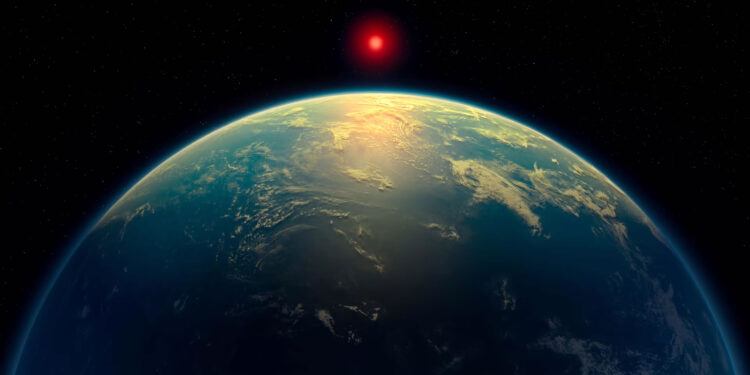Astronomers using the powerful James Webb Space Telescope may have found the best evidence yet of life beyond Earth. The telescope spotted special gases in the atmosphere of a distant planet called K2-18 b that on our world are only produced by living organisms.
The gases, known as DMS and DMDS, typically come from tiny ocean creatures like algae. While this doesn’t prove life exists there, it’s the strongest clue scientists have discovered so far. The research team emphasizes they need to conduct more tests to be certain.
“This could mark a major breakthrough in our search for life in space,” said lead researcher Nikku Madhusudhan from Cambridge University. “We’re not claiming we’ve found aliens, but we’ve detected signs that might indicate life could be present.”
The planet weighs about eight times more than Earth and is twice as wide. It orbits in the habitable zone around its star where temperatures could allow liquid water to exist. Since water is essential for life as we understand it, this makes the discovery particularly exciting.
K2-18 b belongs to a special class called “hycean” planets – potential water worlds with thick atmospheres. Previous telescope observations already found methane and carbon dioxide in its air. The new detection of possible life-related gases makes this world even more intriguing to scientists.
Researchers studied the planet by observing how its star’s light changed as the world passed in front. Different gases leave distinct patterns in the light, much like fingerprints. The telescope identified signs of these special gases with 99.7% confidence, meaning there’s only a small possibility the reading is wrong.
Other experts not involved in the study say the findings are promising but urge caution. One scientist noted this is exactly the kind of discovery researchers hoped to make, but stressed the need for thorough verification before concluding it’s evidence of life.
The next steps involve looking at the planet again using different telescope instruments, studying how these gases might form without biological processes, and comparing this world to similar planets. Madhusudhan emphasized the importance of not rushing to judgment, noting that while finding extraterrestrial life would be revolutionary, scientists must be completely certain before making such a claim.
This discovery demonstrates the remarkable capabilities of the new space telescope. In just a short time, we’ve progressed from wondering if other planets could support life to potentially finding indicators that some actually do. The coming research could bring humanity closer than ever to answering the profound question of whether we’re alone in the cosmos.



































